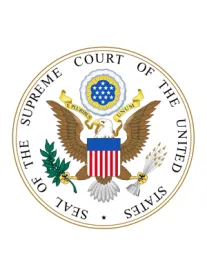Earlier this week, the U.S. Supreme Court heard oral argument in TransUnion v. Ramirez, which poses significant questions about Article III standing and Rule 23’s typicality requirement for class certification. Ramirez will likely be one of the most consequential standing cases since Spokeo, Inc. v. Robins, affecting litigation involving violations of consumer protection statutes such as the Fair Credit Reporting Act (FCRA), the Telephone Consumer Protection Act (TCPA), and various states’ privacy laws—as well as cases involving data breaches, which have been a hotbed of disputes over standing. The decision will likely help define the parameters of federal court standing, particularly in cases with questionable harm.
Background
The Ramirez case centers on a TransUnion product called “OFAC Advisor.” “OFAC” refers to the U.S. Department of the Treasury’s Office of Foreign Assets Control, which maintains a list of individuals who are prohibited from transacting business in the United States for national security reasons. Because businesses that transact with an individual on the list face significant fines, TransUnion offered OFAC Advisor to alert its customers if an individual was potentially on the list to determine whether to do business with the individual.
Sergio Ramirez, the sole class representative in the case, found himself in a precarious situation when he sought to finance a car with his wife, only to be told by the salesman that the dealership would not sell the car to him because he was on “a terrorist list.” As it turned out, the dealership had obtained Ramirez’s credit report from TransUnion, which included a statement that Ramirez’s name was potentially on the OFAC list. Ramirez began researching what the OFAC alert meant and how to have it removed. Ultimately, Ramirez requested a copy of his credit report so he could verify whether it contained an OFAC alert. TransUnion sent Ramirez a copy of his credit report with the required summary of rights. TransUnion also sent Ramirez a separate letter regarding the OFAC list. The letter did not attach a summary of rights.
Ramirez filed a class-action lawsuit in the Northern District of California alleging “reasonable procedures,” “disclosure,” and “summary-of-rights” violations of the FCRA. Ramirez alleged that TransUnion violated the FCRA by placing the false OFAC alerts on his credit report and later sending misleading and incomplete disclosures about the alerts. Ramirez claimed he was embarrassed, shocked, and scared when he learned his name was on a terrorist watch list. He was also disappointed and embarrassed that he was unable to purchase the car.
In addition to Ramirez, TransUnion sent the same OFAC letter to 8,184 other consumers who also requested copies of their credit reports between January 2011 and July 2011. But no third party—not a potential creditor, a potential employer, or anyone else—ever saw a credit report for more than 75% of the class members.
A jury found in favor of the class on all three claims and awarded each class member $984.22 in statutory damages (about $8 million class wide) and $6,353.08 in punitive damages (about $52 million class wide). In a 2-1 decision, the Ninth Circuit affirmed in full except for the punitive damages award, which it reduced to $3,936.88 per class member.
Certiorari Granted
The Supreme Court granted TransUnion’s petition for writ of certiorari. The issue TransUnion’s lawyer presented is whether either Article III or Rule 23 permits a damages class action where the vast majority of the class suffered no actual injury, let alone an injury anything like what the class representative suffered. The oral argument addressed federal court standing and Rule 23’s typicality requirement.
Standing
The standing issue in Ramirez centers on: (1) whether inaccuracies in a consumer’s credit file create standing if no credit report was disseminated to a third party; and (2) whether receiving information in a consumer’s credit file in a non-compliant manner is sufficient to support standing.
TransUnion’s lawyer, Paul Clement, argued that “there is no evidence that the risk ever materialized for over 6,000 class members, and yet they all stand to receive a sizable check.”
Although Ramirez had suffered a cognizable injury, 75% of the class did not as there was no evidence their credit reports were prepared or disseminated. On the other side, Ramirez’s counsel argued that class members could potentially face an explosive risk of harm if credit reports were prepared or disseminated.
Chief Justice Roberts and Justice Alito pressed Clement about the potential for harm, indicating they might find sufficient harm to establish standing. Some questioning suggested the Court might take a middle approach, finding standing for the class members whose credit reports were disseminated, and no standing for those whose reports were not. Justice Kavanaugh, in particular, seemed open to such a result. “I think you have a good argument with respect to the 1,853 [class members whose credit reports were disseminated] in terms of the reasonable procedures, but I’m more concerned about the 6,332, whose information was not, in essence, published,” he said to Ramirez’s counsel, Samuel Issacharoff.
Assistant Solicitor General Nicole Reaves weighed in on behalf of the government, arguing that the Court should find all class members have standing. However, Reaves urged the court to vacate and remand for lack of typicality (discussed below).
The Court’s opinion will be crucial for future cases involving technical statutory violations and cases in which the alleged injury is a risk of future harm.
Typicality
The Court is also likely to decide whether typicality requires only that a class representative’s legal claims are typical of the class and are not subject to any unique defenses, or whether a class representative’s injuries must also be typical of the class. Clement argued Ramirez’s claims were atypical because they involved unique (and egregious) injuries, while the vast majority of the class members never even knew of the violation, never had a credit report disseminated to any third party, and did not suffer a denial of credit or other injury anything like Ramirez’s. Clement argued, “typicality means something different from commonality, and the typicality requirement precludes a class representative with wholly atypical injuries.”
Justice Sotomayor honed in on this issue and indicated she favors the former conclusion. “I don't see where Rule 23(a)(3) requires typical damages,” she said.
Notably, multiple justices suggested that Ramirez’s unique injuries were not dispositive of typicality but potentially could have been excluded from Ramirez’s testimony. TransUnion, Justice Breyer suggested, could have objected to the introduction of the “separate and special information about Ramirez” on the ground that it was irrelevant and prejudicial, as “it had nothing to do with the typical injury suffered by the class.” Practitioners defending class actions should heed Justice Breyer’s suggestion and consider moving to exclude evidence of unique, harmful facts about a class representative that are not typical class wide.
A decision is expected later this year. The result will be closely watched for its potential impact on Article III federal court standing as well as class action typicality requirements. The case may very well shape the future of class actions particularly where there are substantial issues whether absent class members have a recognizable injury to be compensated.




 />i
/>i
